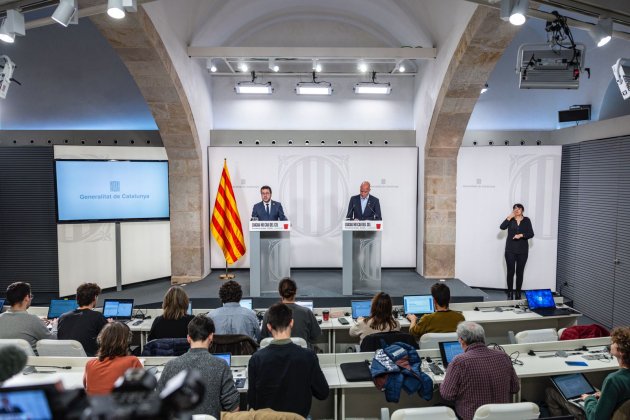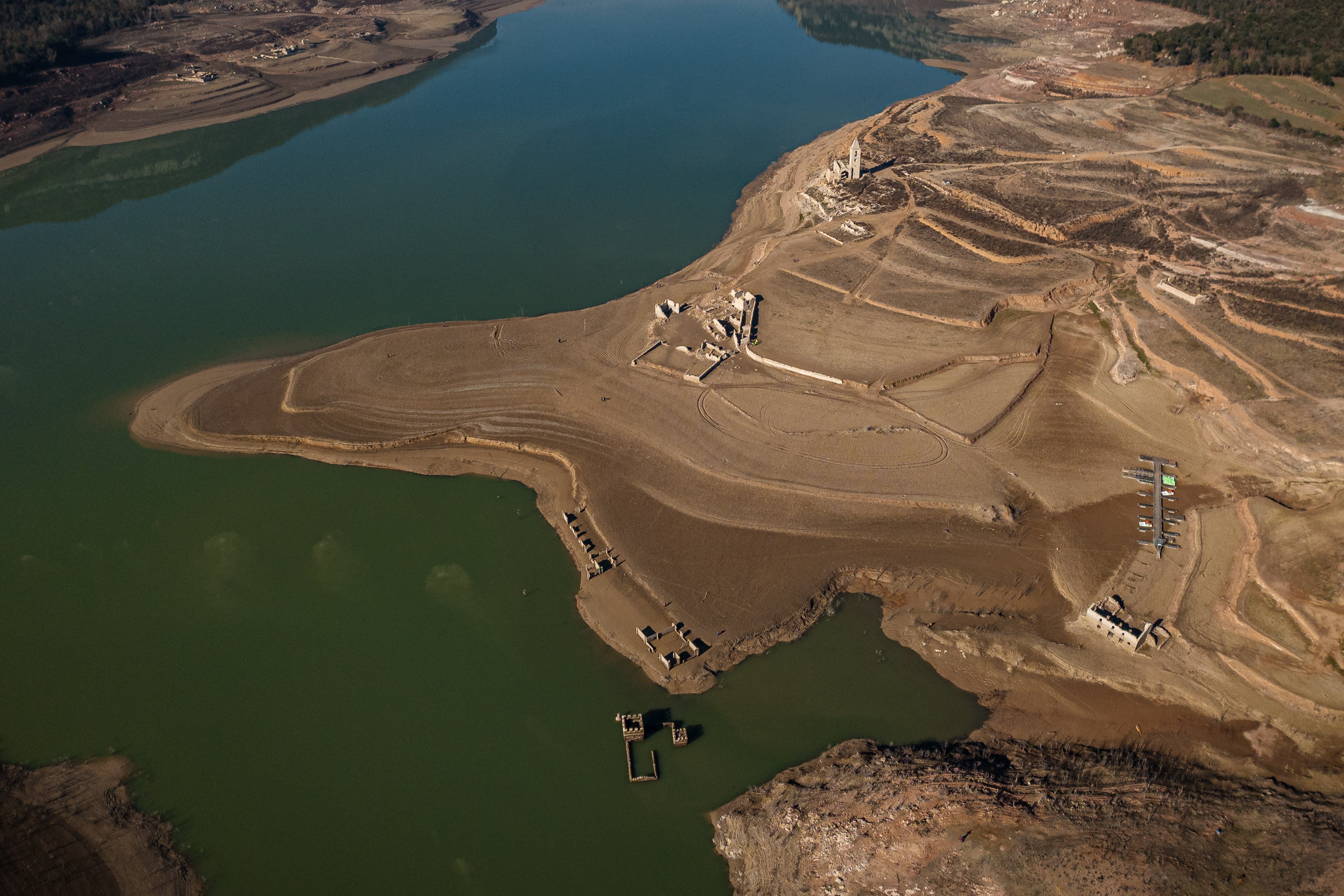Catalonia has declared a drought emergency. The Catalan president, Pere Aragonès, appeared before the media this Thursday to announce that the entire Ter-Llobregat catchment area is entering emergency phase, due to the extremely grave situation that Catalonia is experiencing. In this region - most of it close to Catalonia's Mediterranean coast, where six million people live, and including Barcelona city and 201 other municipalities - reservoir levels have now fallen to less than 100 hm³, or 16% of their capacity. This percentage automatically triggers the phase change, as indicated in Catalonia's Special Drought Plan, to Emergency level, the most severe of the five levels of drought. "Catalonia is undergoing the worst drought of the last century", admitted Aragonès. "We have never experienced such a long and intense drought. For 40 months, the level of rainfall has been extremely low, and in many weeks there has been no rain at all." The emergency entry will take effect this Friday, when it is published in the official gazette.
Aragonès applauded the efforts of the Catalan public, who "have understood that we are in an exceptional situation". He underlined the savings that people have been made voluntarily in homes, as well as that which has taken place in the industrial and agricultural sectors by making "more efficient" use of water. As well, he pointed out that the Generalitat of Catalonia has "been taking action all this time", first activating the Special Drought Plan in September 2021 and having foreseen the measures that had to be carried out. Second, it has also "accelerated investments" to obtain more water from desalination plants and regeneration, and was worked jointly with municipal councils "to improve the water supply network". This has made it possible to reduce the emptying of the reservoirs and delay the emergency entry, since if nothing had been done "we would have been in this situation for 15 months".
Given the critical situation, Aragonès stated that Catalonia will "intensify" its collaboration with the Spanish government, opening the way for the state to help in every way possible. It has also informed the European Commission of the need, from financial and regulatory points of view, that there be "the necessary flexibility" so that Catalonia can deal with the drought. In fact, the president was in Brussels this Wednesday to address issues at European level.

Meeting with Ribera, deputy PM and climate minister
In addition, the Catalan climate action minister, David Mascort, highlighted that on Monday he is to meet Spain's third deputy PM and climate minister, Teresa Ribera, in Barcelona. On the table, one of the topics will be the possibility of making available tanker ships to Catalonia to transport water, in the event that these additional resources are needed. Mascort has pointed out that the most difficult aspect is "finding ships" and that, in any case, it would be an "emergency solution". The Catalan minister also emphasized the fact that they have a clear "road map" to follow and was "hopeful" about the medium-term future, forecasting that between 2027 and 2030, Catalonia would be able to generate up to 160 hm³ from desalination plants.
The map and the restrictions
The drought emergency affects more than six million Catalans, most of them located in the Barcelona metropolitan area and its surroundings, who depend on the Ter-Llobregat system - the Llobregat being the major river flowing south from the Pyrenees to reach the sea on the Catalan capital's south-west rim, while similarly, the Ter is the major river in the Girona province to the north. In total, 202 municipalities in 14 counties now enter into emergency, joining other areas of Catalonia where the most severe drought status has already been declared - mostly in the Muga catchment in Catalonia's far north. The western part of Catalonia - fed by the Ebre, grey on the map - is administered by the Spanish government-managed catchment authority, the Ebro Hydrographic Confederation. You can check on this map which phase each municipality is in.
Drought phases are: 0. Normal = no drought; 1. Pre-alert (currently, no municipalities on the map); 2. Alert; 3. Exceptionality; 4. Pre-Emergency (currently, no municipalities on the map); 5. Emergency.
The phase change also implies new restrictions on water use. The main new feature of the entry into emergency status is the limit within affected municipalities of 200 litres of water consumption per person and day on average, 10 litres less than the threshold that existed during the pre-emergency phase. The watering of gardens and green areas, whether public or private, is prohibited. In addition, the ban on filling ornamental fountains and artificial lakes remains, although ponds that serve as a refuge for endangered fauna and fauna intended for the recovery of native species can be filled.
As for swimming pools, although up till now the emergency did not include permission to fill them, the text has been slightly modified. Thus, indoor and public swimming pools registered in the census of sports facilities, and outdoor swimming pools used throughout the year for federated sports practice, can be partially refilled. There is also a relaxation of the regulations regarding the watering of federated sports fields, which must always be with groundwater or regenerated water, but which does not imply having to ban showers to compensate for the lost water. And at festive events, public or private, no water is allowed, so no more foam parties or temporary ice rinks.
It should be noted that, within the emergency status, there are three distinct sub-phases (I, II and III) that involve intensifying restrictions as the drought crisis worsens. Emergency I has been declared when reservoir reserves have dropped below 100 hm³ (16.3% of capacity), emergency II will be declared when they drop below 67 hm³ (10.95% of capacity), and emergency III will be declared when they fall below 44 hm³ (5.4% of capacity)

